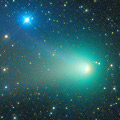
|
Now it is 6.5 mag (Nov. 1, Salvador Aguirre). It keeps so bright as 6-8 mag for a long time from 2011 to 2012. In the Northern Hemisphere, it will be extremely low from late November to late December. But after that, it will be observable in excellent condition again. In the Southern Hemisphere, it is not observable now. But it will be observable again in 2012 spring, although it locates low.
Date(TT) R.A. (2000) Decl. Delta r Elong. m1 Best Time(A, h)
Nov. 12 17 33.06 19 5.8 2.080 1.653 51 6.5 18:24 ( 92, 32)
Nov. 19 17 31.61 19 31.0 2.105 1.622 48 6.4 18:20 ( 96, 27)
|
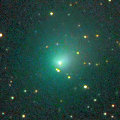
|
Now it is 9.7 mag (Oct. 29, Juan Jose Gonzalez). It keeps 10 mag until November. It will start fading after December. But it keeps observable in excellent condition for a while in the Northern Hemisphere. It is appearing also in the Southern Hemisphere. After this, it keeps observable until 2012 spring when it fades down to 15-16 mag.
Date(TT) R.A. (2000) Decl. Delta r Elong. m1 Best Time(A, h)
Nov. 12 5 33.90 38 27.7 1.290 2.156 141 10.6 2:13 (180, 86)
Nov. 19 5 3.45 33 43.2 1.251 2.190 155 10.7 1:16 ( 0, 89)
|

|
It is not observable at all due to the bad condition in this apparition.
Date(TT) R.A. (2000) Decl. Delta r Elong. m1 Best Time(A, h)
Nov. 12 14 18.93 -9 19.5 1.981 1.049 14 11.1 5:04 (279, -4)
Nov. 19 14 48.86 -11 26.5 1.988 1.054 13 11.2 5:09 (281, -4)
|

|
Now it is very bright as 10.6 mag (Nov. 1, Marco Goiato). It will be observable in good condition at 11-12 mag in autumn and winter.
Date(TT) R.A. (2000) Decl. Delta r Elong. m1 Best Time(A, h)
Nov. 12 23 39.66 0 7.1 1.326 2.072 126 11.9 20:15 ( 0, 55)
Nov. 19 23 43.70 -0 1.7 1.377 2.059 120 11.9 19:52 ( 0, 55)
|
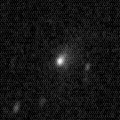
|
Now it is so bright as 12.3 mag (Oct. 19, Hidetaka Sato). The condition of this apparition is bad. In the Northern Hemisphere, it is only observable from December to February in the evening very low sky. In the Southern Hemisphere, it keeps observable for a long time, although it keeps locating extremely low. The component B was not detected, fainter than 20 mag, on May 14 (Hidetaka Sato).
Date(TT) R.A. (2000) Decl. Delta r Elong. m1 Best Time(A, h)
Nov. 12 17 43.08 -29 10.0 1.603 1.017 37 12.5 18:24 ( 50, 4)
Nov. 19 18 21.81 -29 51.2 1.622 1.058 39 12.8 18:20 ( 47, 6)
|
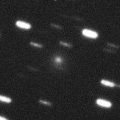
|
Now it is bright as 13.9 mag (Oct. 19, Hidetaka Sato). Not observable in the Northern Hemisphere. It will be unobservable soon also in the Southern Hemisphere. It will brighten up to 11-12 mag in winter, however, it is not observable around the perihelion passage. In the Northern Hemisphere, it is not observable until 2012 summer, when it will be fainter than 15 mag. In the Southern Hemisphere, it will never be observable again.
Date(TT) R.A. (2000) Decl. Delta r Elong. m1 Best Time(A, h)
Nov. 12 16 58.96 -29 54.8 2.481 1.679 28 12.9 18:24 ( 56, -4)
Nov. 19 17 19.96 -28 32.4 2.456 1.622 25 12.8 18:20 ( 57, -3)
|
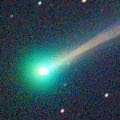
|
It passed very near by the earth, within 0.1 A.U., and brightened up to 8.0 mag in the southern sky (Aug. 14, Willian Souza). It appeared in the morning sky in the Northern Hemisphere. It brightened up to 6.6 mag in late September (Sept. 25, Juan Jose Gonzalez). Now it is fading, but still bright as 11.0 mag (Nov. 1, Salvador Aguirre). It keeps observable while fading gradually after this. In the Southern Hemisphere, it is not observable until winter when it becomes fainter than 16 mag.
Date(TT) R.A. (2000) Decl. Delta r Elong. m1 Best Time(A, h)
Nov. 12 12 33.95 -1 1.3 1.523 1.011 40 13.0 5:04 (288, 22)
Nov. 19 12 49.69 -2 23.7 1.588 1.111 43 13.7 5:09 (292, 25)
|
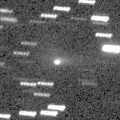
|
It brightened rapidly and reached up to 12.9 mag (Oct. 28, Artyom Novichonok). It keeps the current brightness until December. Then it starts fading, but it keeps observable in good condition until May when it becomes fainter than 18 mag. It locates somewhat low in the Southern Hemisphere.
Date(TT) R.A. (2000) Decl. Delta r Elong. m1 Best Time(A, h)
Nov. 12 10 8.89 7 34.9 1.291 1.449 77 13.2 5:04 (313, 54)
Nov. 19 10 27.96 7 36.4 1.262 1.465 80 13.3 5:09 (318, 56)
|
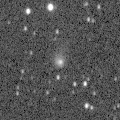
|
Now it is bright as 14.1 mag (Oct. 3, Hidetaka Sato). It keeps bright as 13-14 mag for a long time after this until 2013. It is not observable in the Northern Hemisphere, but it is observable in good condition in the Southern Hemisphere.
Date(TT) R.A. (2000) Decl. Delta r Elong. m1 Best Time(A, h)
Nov. 12 13 4.31 -82 41.9 5.790 5.467 66 13.5 5:04 (352,-32)
Nov. 19 13 22.77 -84 1.1 5.795 5.464 65 13.5 5:09 (354,-32)
|
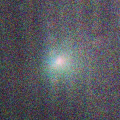
|
New comet discovered in the spacecraft images. It was observed so bright as 9.4 mag (Sept. 22, Chris Wyatt). In the Southern Hemisphere, it must have located high and been observable in excellent condition from spring to summer. In the Northern Hemisphere, it is appearing in the morning sky. It will be observable while fading gradually after this. In the Southern Hemisphere, further observations are very hard.
Date(TT) R.A. (2000) Decl. Delta r Elong. m1 Best Time(A, h)
Nov. 12 14 27.76 1 40.2 2.255 1.381 21 13.6 5:04 (268, 1)
Nov. 19 14 29.11 3 29.4 2.243 1.446 27 14.0 5:09 (272, 8)
|

|
It brightened up to 17.1 mag in late June (June 24, J. F. Hernandez). It will brighten up to 13 mag in winter. But the condition of this apparition is bad, and it will not be observable around the perihelion passage. It will appear in the morning sky at 14 mag in 2012 April in the Southern Hemisphere. It will not be observable until 2012 June in the Northern Hemisphere, when the comet will be 15.5 mag.
Date(TT) R.A. (2000) Decl. Delta r Elong. m1 Best Time(A, h)
Nov. 12 15 53.20 -21 6.9 2.559 1.601 11 13.8 18:24 ( 72,-11)
Nov. 19 16 14.83 -22 31.4 2.554 1.589 9 13.6 18:20 ( 71,-12)
|
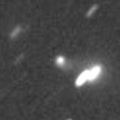
|
Now it is 14.3 mag (Sept. 13, Artyom Novichonok and Vladimir Gerke). It was observed much brighter visually around 10-12 mag. It keeps the current brightness from 2011 summer to 2012 summer. But it is not observable around the perihelion. It is already unobservable in the Southern Hemisphere. It will be unobservable soon also in the Northern Hemisphere.
Date(TT) R.A. (2000) Decl. Delta r Elong. m1 Best Time(A, h)
Nov. 12 16 33.43 -7 7.5 3.250 2.376 23 13.7 18:24 ( 77, 5)
Nov. 19 16 48.59 -8 20.3 3.262 2.364 20 13.7 18:20 ( 78, 3)
|
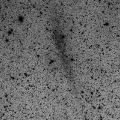
|
It has brightened faster than expected, and reached up to 8.1 mag in mid August (Aug. 19, Michael Mattiazzo). However, the nucleus has been disintegrated, and it faded out and got diffuse very rapidly. The necleus has been already fainter than 22.5 mag and unable to be detected (Oct. 23, Jakub Cerny). But the remnant of the comet is still visible westwards from the predicted position, extremely large, diffuse and elongated as 40x5 arcmin. Juan Jose Gonzalez reported the total magnitude of the remnant as 9.3 mag on Oct. 30 visually.
Date(TT) R.A. (2000) Decl. Delta r Elong. m1 Best Time(A, h)
Nov. 12 4 27.13 27 45.4 0.434 1.403 158 13.8 1:07 ( 0, 83)
Nov. 19 3 57.90 25 48.5 0.534 1.519 171 14.6 0:10 ( 0, 81)
|
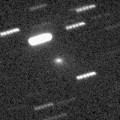
|
Now it is 13.9 mag and visible visually (Oct. 21, Jakub Cerny). It will reach up to 10 mag from January to March, but it will be too low to observe. It is already unobservable in the Southern Hemisphere. It is getting lower in the evening sky also in the Northern Hemisphere. It will be lower than 10 degree in early January.
Date(TT) R.A. (2000) Decl. Delta r Elong. m1 Best Time(A, h)
Nov. 12 17 32.68 -1 2.3 2.231 1.597 39 14.2 18:24 ( 73, 21)
Nov. 19 17 50.83 -1 49.2 2.195 1.534 37 13.8 18:20 ( 74, 19)
|
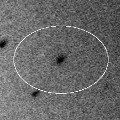
|
Appearing in the morning sky. Now it is bright as 14.2 mag (Oct. 24, Jean-Francois Soulier). Juan Jose Gonzalez reported a very faint large coma, remnant of an old outburst, is visible with a total brightness of 10.2 mag.
Date(TT) R.A. (2000) Decl. Delta r Elong. m1 Best Time(A, h)
Nov. 12 12 17.07 -8 47.1 6.961 6.262 42 14.2 5:04 (297, 20)
Nov. 19 12 20.94 -9 19.7 6.881 6.262 47 14.2 5:09 (303, 25)
|

|
Big asteroid discovered in 1906. It suddenly showed the cometary activity on Dec. 11, 2010, probably due to an impact of a small object. It was very bright as 11.5 mag visually (Dec. 17, 2010, Juan Jose Gonzalez). It had a dust coma still on Jan. 9, 2011 (Joseph Brimacombe). Then it turned to be stellar at 13.8 mag (Apr. 5, Juan Jose Gonzalez). Appearing in the morning sky in the Northern Hemisphere.
Date(TT) R.A. (2000) Decl. Delta r Elong. m1 Best Time(A, h)
Nov. 12 13 48.13 -1 35.8 3.442 2.578 24 14.3 5:04 (277, 7)
Nov. 19 13 59.74 -2 48.3 3.394 2.569 28 14.3 5:09 (281, 11)
|
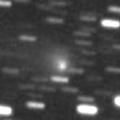
|
Now it is 14.3 mag and visible visually (Oct. 1, Jakub Cerny). It will be observable at 13-14 mag for a long time from 2011 to 2012. However, it will be unobservable temporarily from November to January.
Date(TT) R.A. (2000) Decl. Delta r Elong. m1 Best Time(A, h)
Nov. 12 17 55.36 -13 0.2 5.975 5.267 40 14.3 18:24 ( 60, 17)
Nov. 19 17 56.36 -13 14.1 6.041 5.255 34 14.3 18:20 ( 64, 13)
|
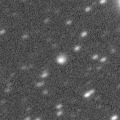
|
Now it is visible visually at 13.8 mag (Oct. 29, Todd Augustyniak). It is expected to be 13 mag and will be observable in good condition in 2013. In the Northern Hemisphere, it keeps observable for a long time after this. It is not observable in the Southern Hemisphere.
Date(TT) R.A. (2000) Decl. Delta r Elong. m1 Best Time(A, h)
Nov. 12 23 21.44 61 25.5 6.493 7.056 121 14.8 19:56 (180, 64)
Nov. 19 23 13.94 60 15.4 6.500 7.030 118 14.8 19:21 (180, 65)
|

|
It was expected to keep 14-15 mag for a long time from 2011 summer to 2012 summer. However, it is lost. It was observed only during two days in 2010 June. So the orbital elements are extremely uncertain. The condition is good in the Southern Hemisphere. But in the Northern Hemisphere, it is not observable until 2012 August.
Date(TT) R.A. (2000) Decl. Delta r Elong. m1 Best Time(A, h)
Nov. 12 16 44.81 -61 56.9 3.059 2.503 47 14.9 18:24 ( 30,-24)
Nov. 19 17 1.59 -63 20.8 3.048 2.473 46 14.9 18:20 ( 29,-26)
|
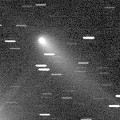
|
First return of a new periodic comet which brightened up to 13 mag in a major outburst in 2005. In this apparition, it brightened up to 12 mag in 2011 summer and autumn. It will be fading after this, but it is still bright as 13.8 mag (Oct. 28, Artyom Novichonok). It keeps observable in good condition until February when it fades out down to 17-18 mag. The fragment B is also observed at 20 mag. Another fragments C and D are also observed at 21-22 mag.
Date(TT) R.A. (2000) Decl. Delta r Elong. m1 Best Time(A, h)
Nov. 12 22 46.80 4 22.6 1.772 2.370 115 15.0 19:22 ( 0, 59)
Nov. 19 22 51.94 4 40.0 1.870 2.391 109 15.2 19:00 ( 0, 60)
|
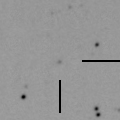
|
It brightened up to 16.6 mag on Oct. 12 (Hidetaka Sato). But it is not observable now. It will keep unobservable until it becomes fainter than 18 mag.
Date(TT) R.A. (2000) Decl. Delta r Elong. m1 Best Time(A, h)
Nov. 12 16 42.14 -26 37.5 2.456 1.602 23 15.0 18:24 ( 61, -5)
Nov. 19 17 5.54 -26 53.0 2.463 1.591 22 15.0 18:20 ( 60, -5)
|

|
First return of a new comet which brightened up to 9.5 mag in a major outburst in 2006. It will approach to the earth down to 0.2 A.U. in January, and will be observable in excellent condition. However, the brightness will be quite uncertain. The comet has not been recovered yet. It was fainter than 20 mag on Oct. 2 (Jean-Francois Soulier).
Date(TT) R.A. (2000) Decl. Delta r Elong. m1 Best Time(A, h)
Nov. 12 22 25.94 40 12.5 0.519 1.305 116 16.4 19:01 (180, 85)
Nov. 19 22 25.38 38 24.1 0.485 1.250 111 15.3 18:33 (180, 87)
|
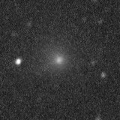
|
It has returned after 27-year blank since 1984. It brightened very rapidly, and became very bright as 9.1 mag (July 10, Tsutomu Seki). It may keep bright after the perihelion passage. It was visible in SWAN images still on Sept. 17 (Hirohisa Sato). Tsutomu Seki reported the comet is about 15 mag in early November, although he commented that confirmation is required.
Date(TT) R.A. (2000) Decl. Delta r Elong. m1 Best Time(A, h)
Nov. 12 13 12.08 -26 35.2 2.643 1.829 27 15.4 5:04 (302, -1)
Nov. 19 13 26.33 -27 58.3 2.701 1.918 30 15.8 5:09 (306, 1)
|

|
Now it is 15.7 mag (Oct. 20, Catalina Sky Survey). It is expected to be observable at 13 mag for a long time from 2012 summer to 2013 summer. It will be observable in excellent condition in the Southern Hemisphere. But it is not observable at brightest time in the Northern Hemisphere. It keeps observable for a while at 16 mag while brightening gradually.
Date(TT) R.A. (2000) Decl. Delta r Elong. m1 Best Time(A, h)
Nov. 12 1 58.73 -31 30.3 3.592 4.278 128 15.6 22:33 ( 0, 23)
Nov. 19 1 49.68 -32 29.5 3.606 4.218 122 15.5 21:56 ( 0, 23)
|
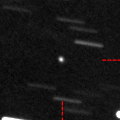
|
It is expected to be bright as 9 mag from 2012 to 2013. Now it is 15.8 mag (Oct. 22, Erik Bryssinck). It is already visible visually at 14.6 mag (Oct. 1, Jakub Cerny). In the Northern Hemisphere, although it becomes low temporarily in 2011 autumn, it keeps observable in good condition for a long time until 2012 autumn when the comet brightens up to 10 mag. In the Southern Hemisphere, it is hardly observble before the perihelion passage. But it becomes observable in good condition since 2013 after the perihelion passage.
Date(TT) R.A. (2000) Decl. Delta r Elong. m1 Best Time(A, h)
Nov. 12 13 56.12 44 10.8 5.367 5.008 63 15.6 5:04 (234, 28)
Nov. 19 14 4.82 43 54.3 5.257 4.947 66 15.5 5:09 (236, 33)
|
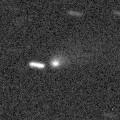
|
It was revealed to be a comet when appearing in the morning sky in early August. It has already passed the perihelion in April, and it will be fading after this. But it is still bright as 15.4 mag (Oct. 29, Artyom Novichonok). In the Northern Hemisphere, it keeps observable in excellent condition for a long time until 2012 summer. It is not observable at all in the Southern Hemisphere.
Date(TT) R.A. (2000) Decl. Delta r Elong. m1 Best Time(A, h)
Nov. 12 11 20.77 48 0.6 2.734 2.785 82 15.8 5:04 (234, 55)
Nov. 19 11 31.25 48 19.1 2.716 2.836 86 15.9 5:09 (233, 59)
|
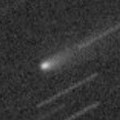
|
Now it is 15.7 mag (Oct. 29, Artyom Novichonok). It keeps 16 mag from October to November, but it will be fainter than 18 mag in winter. In the Northern Hemisphere, it keeps locating the same altitude in the morning sky. In the Southern Hemisphere, it locates extremely low now, but it will be getting higher gradually. Juan Jose Gonzalez reported that it was visible as a 11.3-mag diffuse comet visually on Oct. 9.
Date(TT) R.A. (2000) Decl. Delta r Elong. m1 Best Time(A, h)
Nov. 12 11 47.96 -6 10.2 1.501 1.145 49 16.0 5:04 (301, 27)
Nov. 19 12 9.90 -10 11.2 1.527 1.175 50 16.1 5:09 (306, 26)
|
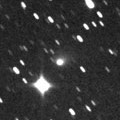
|
It brightened rapidly, reached up to 14.2 mag in summer and became visible visually (Aug. 1, Juan Jose Gonzalez). Now it is fading slowly. But it is still bright as 15.6 mag (Oct. 24, Hidetaka Sato). It keeps observable until winter when it fades out down to 17-18 mag.
Date(TT) R.A. (2000) Decl. Delta r Elong. m1 Best Time(A, h)
Nov. 12 21 15.24 -26 3.5 2.200 2.321 84 16.0 18:24 ( 8, 29)
Nov. 19 21 26.31 -25 18.3 2.286 2.327 79 16.1 18:20 ( 12, 29)
|
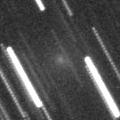
|
Extremely diffuse and hardly detected by CCD images. The nucleus is already fainter than 18 mag (Oct. 15, Jean-Francois Soulier). The comet can be already disintegrated. However, Juan Jose Gonzalez reported it so bright as 9.5 mag visually on Sept. 25. In the Northern Hemisphere, it keeps locating higher than 20 degree from November to December. In the Southern Hemisphere, it will be observable in early November, then it will be getting higher rapidly.
Date(TT) R.A. (2000) Decl. Delta r Elong. m1 Best Time(A, h)
Nov. 12 11 48.30 -10 46.6 1.895 1.442 48 16.2 5:04 (304, 24)
Nov. 19 11 51.11 -15 13.6 1.897 1.530 53 16.4 5:09 (313, 25)
|
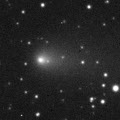
|
It became bright as 12 mag in 2010. Now it is fading. It has already faded down to 17.1 mag (Oct. 26, S. Shurpakov).
Date(TT) R.A. (2000) Decl. Delta r Elong. m1 Best Time(A, h)
Nov. 12 1 39.88 1 17.3 3.022 3.931 153 16.3 22:14 ( 0, 56)
Nov. 19 1 36.02 1 14.1 3.093 3.949 145 16.4 21:43 ( 0, 56)
|
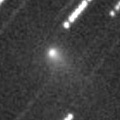
|
It was very bright and visible visually as 12.4 mag in July and early August (Aug. 2, Jakub Koukal). Now it is fading rapidly. It has already faded down to 17.0 mag (Oct. 11, Artyom Novichonok and Vladimir Gerke). In the Northern Hemisphere, it keeps observable until the end of 2011 when it becomes fainter than 18 mag. It will never be observable again in the Southern Hemisphere.
Date(TT) R.A. (2000) Decl. Delta r Elong. m1 Best Time(A, h)
Nov. 12 17 44.46 36 16.0 2.460 2.238 65 16.5 18:24 (110, 41)
Nov. 19 17 50.03 37 6.1 2.522 2.282 64 16.7 18:20 (113, 38)
|
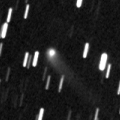
|
Now it is 16.9 mag (Oct. 13, P. Dupouy). It will be fading very slowly after this. In the Northern Hemisphere, it keeps observable for a long time until 2012 spring when it fades down to 17-18 mag. It will not be observable in the Southern Hemisphere.
Date(TT) R.A. (2000) Decl. Delta r Elong. m1 Best Time(A, h)
Nov. 12 22 29.59 41 12.4 5.041 5.559 116 16.5 19:05 (180, 84)
Nov. 19 22 32.14 39 57.9 5.131 5.591 112 16.5 18:40 (180, 85)
|
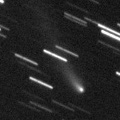
|
It reached up to 14 mag in 2010 autumn and winter. Now it is fading. It has already faded down to 16.6 mag (Sept. 14, Hidetaka Sato). In the Southern Hemisphere, it keeps observable in good condition while fading gradually. In the Northern Hemisphere, it will never be observable again.
Date(TT) R.A. (2000) Decl. Delta r Elong. m1 Best Time(A, h)
Nov. 12 4 59.78 -78 49.0 4.003 3.994 82 16.7 1:38 ( 0,-24)
Nov. 19 4 13.31 -80 2.7 4.081 4.038 80 16.8 0:25 ( 0,-25)
|
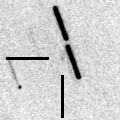
|
It keeps 17 mag for a long time from 2011 summer to 2012 spring. It keeps observable all thgough the period in good condition in the Southern Hemisphere. In the Northern Hemisphere, it is not observable until 2012 spring when it becomes fainter than 18 mag. No observations have been reported since August.
Date(TT) R.A. (2000) Decl. Delta r Elong. m1 Best Time(A, h)
Nov. 12 13 43.01 -67 12.9 2.403 1.948 51 16.8 5:04 (335,-28)
Nov. 19 13 39.84 -67 48.3 2.406 1.956 51 16.8 5:09 (337,-25)
|
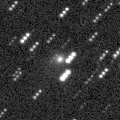
|
Although it has passed the perihelion in last November, it is uxexpectedly bright as 16.5 mag still now (Oct. 25, C. Bell). It keeps observable in excellent condition until winter. It will keep 16-17 mag for a while after this.
Date(TT) R.A. (2000) Decl. Delta r Elong. m1 Best Time(A, h)
Nov. 12 7 3.64 1 37.4 3.986 4.558 119 16.8 3:42 ( 0, 57)
Nov. 19 6 57.78 2 9.7 3.936 4.607 127 16.9 3:08 ( 0, 57)
|
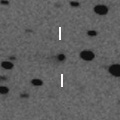
|
Now it is 17.0 mag (Oct. 16, Catalina Sky Survey). It keeps observable at 17 mag for a long time from 2011 to 2012.
Date(TT) R.A. (2000) Decl. Delta r Elong. m1 Best Time(A, h)
Nov. 12 23 41.59 13 37.7 7.395 8.075 130 16.9 20:16 ( 0, 69)
Nov. 19 23 37.96 13 7.1 7.500 8.080 122 16.9 19:45 ( 0, 68)
|
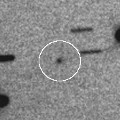
|
Now it is 17.3 mag (Oct. 19, Hidetaka Sato). It tends to be brightest after the perihelion passage. In the Northern Hemisphere, it keeps observable at 17 mag in good condition from autumn to winter. In the Southern Hemisphere, it locates low and will be hard to observe.
Date(TT) R.A. (2000) Decl. Delta r Elong. m1 Best Time(A, h)
Nov. 12 10 35.30 19 59.9 2.268 2.250 76 17.0 5:04 (289, 58)
Nov. 19 10 45.00 20 0.6 2.222 2.290 81 17.0 5:09 (296, 62)
|
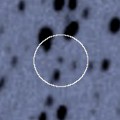
|
Now it is 18.6 mag (Sept. 3, Jean-Francois Soulier). It keeps observable in good condition at 17-18 mag until March. It locates low in the Southern Hemisphere.
Date(TT) R.A. (2000) Decl. Delta r Elong. m1 Best Time(A, h)
Nov. 12 3 52.28 39 36.2 1.275 2.216 155 17.2 0:32 (180, 85)
Nov. 19 3 31.26 38 38.0 1.227 2.184 160 17.0 23:37 (180, 86)
|
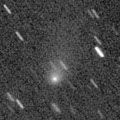
|
It was bright as 13.5 mag and visible visually still in 2011 summer. But it is fading now. It has already faded down to 16.2 mag (Oct. 16, P. Dupouy). It will be fainter than 18 mag in December.
Date(TT) R.A. (2000) Decl. Delta r Elong. m1 Best Time(A, h)
Nov. 12 21 52.32 -34 8.5 3.771 3.887 89 17.0 18:28 ( 0, 21)
Nov. 19 21 52.65 -34 27.8 3.941 3.938 82 17.2 18:20 ( 4, 20)
|

|
It brightened up to 13-14 mag and became visible visually from 2007 to 2009. Now it is fading. But it is still bright as 16.4 mag (Oct. 9, Artyom Novichonok and Vladimir Gerke). In the Northern Hemisphere, it keeps observable in excellent condition until early summer in 2012. In the Southern Hemisphere, it locates extremely low only.
Date(TT) R.A. (2000) Decl. Delta r Elong. m1 Best Time(A, h)
Nov. 12 10 57.53 35 41.5 11.049 10.909 79 17.1 5:04 (258, 59)
Nov. 19 10 57.49 35 54.4 10.974 10.945 85 17.1 5:09 (259, 66)
|
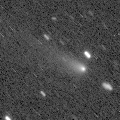
|
It brightened up to 14.0 mag and became visible visually in August (Aug. 1, Juan Jose Gonzalez). Now it is fading. It has already faded down to 16.5 mag (Oct. 15, F. Garcia).
Date(TT) R.A. (2000) Decl. Delta r Elong. m1 Best Time(A, h)
Nov. 12 23 4.61 -16 17.3 1.788 2.340 111 17.2 19:40 ( 0, 39)
Nov. 19 23 9.96 -15 14.8 1.887 2.362 106 17.4 19:18 ( 0, 40)
|
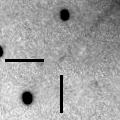
|
Now it is 17.2 mag (Oct. 7, IAA-AI Atacama). It keeps 17-18 mag until early 2013. It keeps observable in good condition until early 2012 in the Southern Hemisphere, although it locates low in the Northern Hemisphere. In the Northern Hemisphere, it will be observable in good condition from 2012 autumn to early 2013.
Date(TT) R.A. (2000) Decl. Delta r Elong. m1 Best Time(A, h)
Nov. 12 0 27.47 -43 5.1 2.754 3.220 109 17.3 21:02 ( 0, 12)
Nov. 19 0 25.72 -41 38.1 2.796 3.197 104 17.3 20:33 ( 0, 14)
|
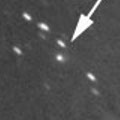
|
Now it is 17.0 mag (Oct. 18, Toshiyuki Takahashi). It will be observable in good condition for a while. But it will be fainter than 18 mag in December.
Date(TT) R.A. (2000) Decl. Delta r Elong. m1 Best Time(A, h)
Nov. 12 23 23.18 -9 43.1 1.375 2.042 118 17.3 19:59 ( 0, 45)
Nov. 19 23 28.82 -9 6.6 1.439 2.040 113 17.4 19:37 ( 0, 46)
|
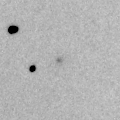
|
Now it is 16.7 mag (Oct. 26, Hidetaka Sato). It was observed at 17.5 mag in 2011 spring, when the condition was good in the Southern Hemisphere. It will be observable at 17 mag in this winter, when the condition is good in the Northern Hemisphere.
Date(TT) R.A. (2000) Decl. Delta r Elong. m1 Best Time(A, h)
Nov. 12 10 51.20 13 2.3 2.392 2.254 69 17.4 5:04 (295, 50)
Nov. 19 10 46.17 14 50.4 2.254 2.279 78 17.3 5:09 (303, 59)
|
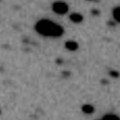
|
Now it is 17.8 mag (Oct. 22, C. Bell). It keeps observable at 18 mag for a long time until 2013.
Date(TT) R.A. (2000) Decl. Delta r Elong. m1 Best Time(A, h)
Nov. 12 5 41.19 26 13.3 3.090 3.927 143 17.4 2:20 ( 0, 81)
Nov. 19 5 38.11 26 15.3 3.032 3.926 150 17.4 1:49 ( 0, 81)
|
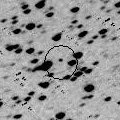
|
Peculiar asteroid moving along a cometary orbit. Now it is 18.4 mag (Oct. 26, Hidetaka Sato). It keeps observable at 18 mag for a long time from 2008 to 2014.
Date(TT) R.A. (2000) Decl. Delta r Elong. m1 Best Time(A, h)
Nov. 12 8 14.26 8 2.3 6.264 6.587 104 17.7 4:52 ( 0, 63)
Nov. 19 8 12.42 8 26.1 6.154 6.592 112 17.6 4:23 ( 0, 63)
|
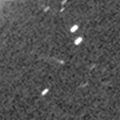
|
Now it is 17.8 mag (Oct. 21, C. Bell). It will be observable in good condition at 18 mag from autumn to winter.
Date(TT) R.A. (2000) Decl. Delta r Elong. m1 Best Time(A, h)
Nov. 12 3 13.83 -13 47.2 3.154 4.033 148 17.6 23:48 ( 0, 41)
Nov. 19 3 10.09 -14 22.4 3.172 4.028 145 17.6 23:17 ( 0, 41)
|
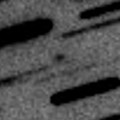
|
The currently reported brightness shows large variation, 16.9 mag on Oct. 22 (Artyom Novichonok), 20.7 mag on Oct. 30 (Hidetaka Sato), 18.2 mag on Nov. 4 (Artyom Novichonok). It may be variable in a short time. This comet was re-discovered in major outburst in 1991.
Date(TT) R.A. (2000) Decl. Delta r Elong. m1 Best Time(A, h)
Nov. 12 6 2.62 -0 48.1 1.890 2.665 132 17.7 2:41 ( 0, 54)
Nov. 19 6 0.88 -1 41.3 1.854 2.676 138 17.7 2:11 ( 0, 53)
|
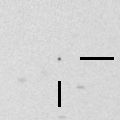
|
Peculiar asteroid moving along a cometary orbit. Now it is 17.5 mag (Aug. 1, Siding Spring Survey)�$B!#�(BIt is observable at 17-18 mag in good condition from September to November.
Date(TT) R.A. (2000) Decl. Delta r Elong. m1 Best Time(A, h)
Nov. 12 2 32.68 5 2.6 1.994 2.961 165 17.9 23:07 ( 0, 60)
Nov. 19 2 27.29 4 33.5 2.075 3.014 157 18.1 22:34 ( 0, 60)
|
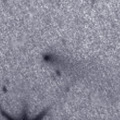
|
Although the condition is bad in this apparition, it brightened up to 12.8 mag in last winter (Dec. 24, Ken-ichi Kadota). Now it is fading, but it is still bright as 16.9 mag (Oct. 14, P. Dupouy). It can be observable at 17-18 mag for some more time.
Date(TT) R.A. (2000) Decl. Delta r Elong. m1 Best Time(A, h)
Nov. 12 23 27.47 -16 30.1 2.369 2.944 116 18.1 20:03 ( 0, 39)
Nov. 19 23 28.52 -15 45.6 2.496 2.981 109 18.2 19:36 ( 0, 39)
|
|
![]()
 78P/Gehrels 2
78P/Gehrels 2 73P/Schwassmann-Wachmann 3
73P/Schwassmann-Wachmann 3 C/2011 Q2 ( McNaught )
C/2011 Q2 ( McNaught ) 45P/Honda-Mrkos-Pajdusakova
45P/Honda-Mrkos-Pajdusakova 49P/Arend-Rigaux
49P/Arend-Rigaux C/2009 F4 ( McNaught )
C/2009 F4 ( McNaught ) C/2011 Q4 ( SWAN )
C/2011 Q4 ( SWAN ) 71P/Clark
71P/Clark C/2011 A3 ( Gibbs )
C/2011 A3 ( Gibbs ) C/2010 X1 ( Elenin )
C/2010 X1 ( Elenin ) 21P/Giacobini-Zinner
21P/Giacobini-Zinner 29P/Schwassmann-Wachmann 1
29P/Schwassmann-Wachmann 1 (596) Scheila
(596) Scheila C/2006 S3 ( LONEOS )
C/2006 S3 ( LONEOS ) C/2010 S1 ( LINEAR )
C/2010 S1 ( LINEAR ) C/2010 M1 ( Gibbs )
C/2010 M1 ( Gibbs ) 213P/2009 B3 ( Van Ness )
213P/2009 B3 ( Van Ness ) 37P/Forbes
37P/Forbes P/2006 T1 ( Levy )
P/2006 T1 ( Levy ) 27P/Crommelin
27P/Crommelin C/2011 R1 ( McNaught )
C/2011 R1 ( McNaught ) C/2011 F1 ( LINEAR )
C/2011 F1 ( LINEAR ) P/2010 JC81 ( WISE )
P/2010 JC81 ( WISE ) C/2011 S2 ( Kowalski )
C/2011 S2 ( Kowalski ) 48P/Johnson
48P/Johnson C/2011 M1 ( LINEAR )
C/2011 M1 ( LINEAR ) 65P/Gunn
65P/Gunn C/2011 L3 ( McNaught )
C/2011 L3 ( McNaught ) C/2008 FK75 ( Lemmon-Siding Spring )
C/2008 FK75 ( Lemmon-Siding Spring ) C/2010 B1 ( Cardinal )
C/2010 B1 ( Cardinal ) C/2011 L2 ( McNaught )
C/2011 L2 ( McNaught ) C/2010 FB87 ( WISE-Garradd )
C/2010 FB87 ( WISE-Garradd ) C/2008 S3 ( Boattini )
C/2008 S3 ( Boattini ) 164P/Christensen
164P/Christensen (3200) Phaethon
(3200) Phaethon C/2009 Y1 ( Catalina )
C/2009 Y1 ( Catalina ) C/2005 L3 ( McNaught )
C/2005 L3 ( McNaught ) 130P/McNaught-Hughes
130P/McNaught-Hughes P/2011 N1 ( ASH )
P/2011 N1 ( ASH ) 253P/2011 R2 ( PanSTARRS )
253P/2011 R2 ( PanSTARRS ) C/2011 G1 ( McNaught )
C/2011 G1 ( McNaught ) 244P/2010 Q1 ( Scotti )
244P/2010 Q1 ( Scotti ) 2008 YB3
2008 YB3 242P/2010 P3 ( Spahr )
242P/2010 P3 ( Spahr ) 97P/Metcalf-Brewington
97P/Metcalf-Brewington 2000 EJ37
2000 EJ37 9P/Tempel 1
9P/Tempel 1![]()














































